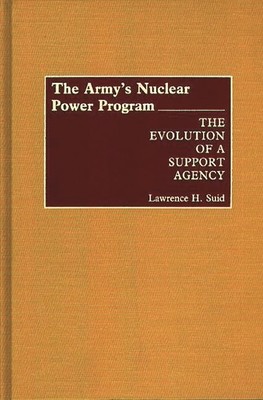
- We will send in 10–14 business days.
- Author: Lawrence H Suid
- Publisher: Praeger
- ISBN-10: 0313272263
- ISBN-13: 9780313272264
- Format: 15.6 x 23.4 x 1.1 cm, hardcover
- Language: English
- SAVE -10% with code: EXTRA
Reviews
Description
On August 6 and August 9, 1945, the world became aware of the destructiveness of nuclear energy when the U.S. Army Air Corps dropped atomic bombs on Hiroshima and Nagasaki. Even before the bombs were detonated, though, President Harry Truman had directed his thoughts toward non-military uses of the atom, recognizing that the atomic bomb had given man a new understanding of the forces of nature. This book examines the history and development of nuclear power from the perspective of the U.S. Army's nuclear power program, telling its story from the creation of the Office of Research and Development through the program's days of growth, and on to its eventual decline.
This history examines the development of the United States Army's nuclear power program from its inception, through the development and operation of six small nuclear power plants throughout the Western Hemisphere, to its evolution into a military support agency. The Manhattan Project District Engineer, General Kenneth Nichols, who generated the idea for the program, worked for the development of atomic energy for peaceful purposes. From the initial plans to develop nuclear power plants at remote bases, the book traces the path the Army took in getting its proposals approved by the Atomic Energy Commission, formally organizing the nuclear program, and building a prototype of a nuclear power plant. Separate chapters are devoted to Fort Greely, the nuclear program at the height of its success and accomplishment, and its subsequent decline and transitional period. With its list of suggestions for further reading and a comprehensive index, this volume will be a valuable resource for courses in military history, energy issues, and the development of atomic power. It will also represent an important addition to college, university, and public libraries.
EXTRA 10 % discount with code: EXTRA
The promotion ends in 19d.10:06:14
The discount code is valid when purchasing from 10 €. Discounts do not stack.
- Author: Lawrence H Suid
- Publisher: Praeger
- ISBN-10: 0313272263
- ISBN-13: 9780313272264
- Format: 15.6 x 23.4 x 1.1 cm, hardcover
- Language: English English
On August 6 and August 9, 1945, the world became aware of the destructiveness of nuclear energy when the U.S. Army Air Corps dropped atomic bombs on Hiroshima and Nagasaki. Even before the bombs were detonated, though, President Harry Truman had directed his thoughts toward non-military uses of the atom, recognizing that the atomic bomb had given man a new understanding of the forces of nature. This book examines the history and development of nuclear power from the perspective of the U.S. Army's nuclear power program, telling its story from the creation of the Office of Research and Development through the program's days of growth, and on to its eventual decline.
This history examines the development of the United States Army's nuclear power program from its inception, through the development and operation of six small nuclear power plants throughout the Western Hemisphere, to its evolution into a military support agency. The Manhattan Project District Engineer, General Kenneth Nichols, who generated the idea for the program, worked for the development of atomic energy for peaceful purposes. From the initial plans to develop nuclear power plants at remote bases, the book traces the path the Army took in getting its proposals approved by the Atomic Energy Commission, formally organizing the nuclear program, and building a prototype of a nuclear power plant. Separate chapters are devoted to Fort Greely, the nuclear program at the height of its success and accomplishment, and its subsequent decline and transitional period. With its list of suggestions for further reading and a comprehensive index, this volume will be a valuable resource for courses in military history, energy issues, and the development of atomic power. It will also represent an important addition to college, university, and public libraries.


Reviews